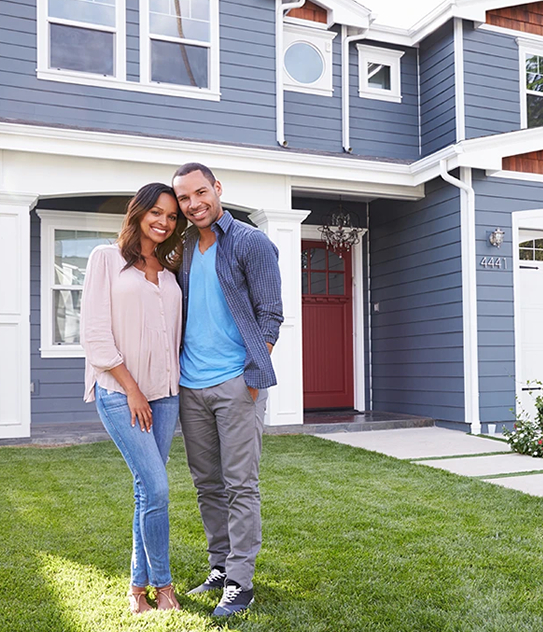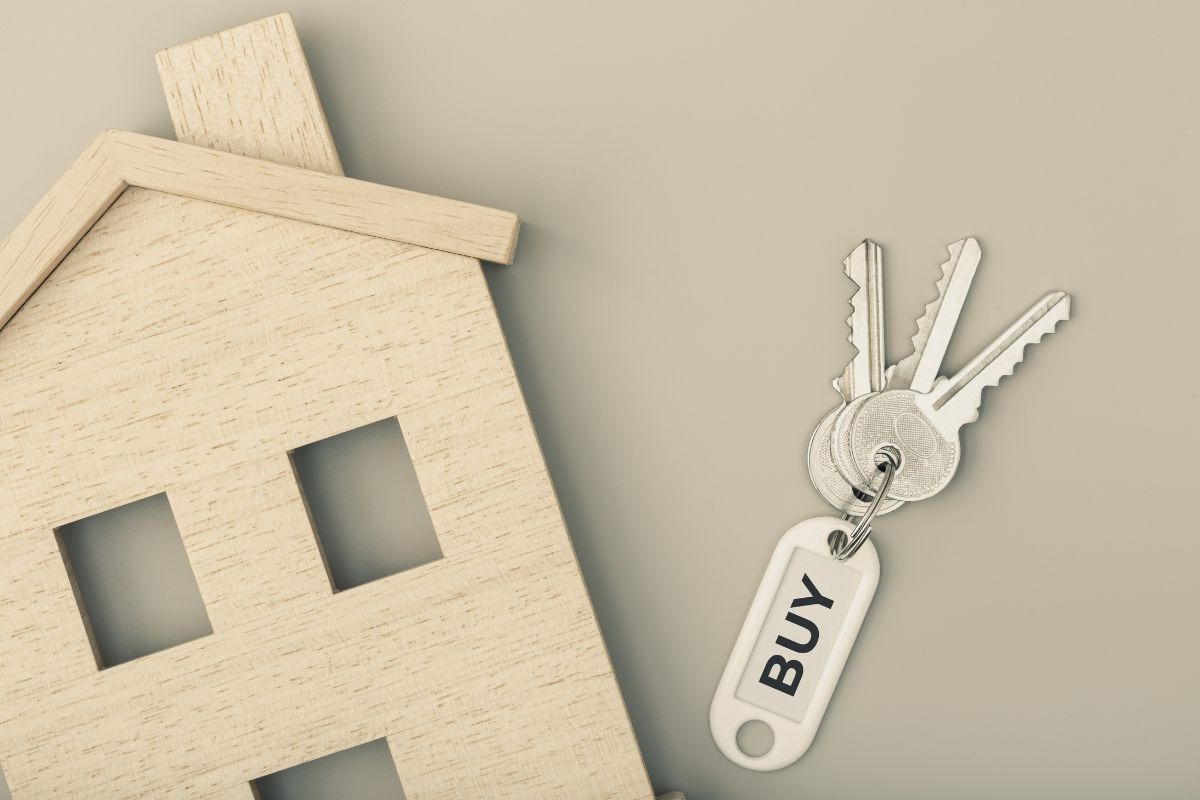2-1 Buydown Loans
Understanding 2-1 Buydown Loans: Benefits & Tips
For many homebuyers in the competitive real estate market, finding financially viable home loan buydown options can be daunting. Yet, a beacon of hope shines through the complexity in the form of 2-1 Buydown Loans. These innovative mortgage buydowns offer a strategic advantage by reducing the interest rate buydown for the first two pivotal years after a property purchase. With the primary goal of making homeownership more accessible, these options allow borrowers to dip their toes into the housing pool without being immediately overwhelmed by high monthly payments. The buydown mortgage rates not only foster an environment for potential buyers to thrive but also present sellers and builders with a unique selling proposition.
As interest rates continue to present a barrier to entry for many, the 2-1 buydown becomes an attractive financial tool, equipping buyers with the means to manage initial expenses while setting roots in their new dwellings. However, it requires careful consideration of future finances as rates ascend to their standard level. The balancing of short-term affordability with long-term responsibility is key when exploring the realm of 2-1 Buydown Loans.
Key Takeaways
- A 2-1 Buydown Loan reduces the interest rate for the initial two years of a mortgage, aiding affordability.
- Buyers must evaluate long-term cost implications as rates increase after the buydown period.
- Sellers may offer these buydowns to attract buyers, supplementing the marketability of their properties.
- Acting as a transitional tool, the 2-1 buydown eases the financial entry into homeownership.
- Prospective buyers should consider their financial stability in relation to future rate adjustments.
- This loan option is a compromise between the initial savings of ARMs and the predictability of fixed-rate loans.
- Understanding the full scope of the agreement is crucial for a successful long-term investment in real estate.

Exploring the Mechanics of 2-1 Buydown Loans
The landscape of home financing is continuously evolving, providing prospective homebuyers with an array of options to secure their dream homes. Among these, the 2-1 buydown loan process stands out as a strategic choice for individuals aiming to mitigate the initial financial impact of purchasing a property. Navigating the complexities of buydowns can be intricate, but understanding the procedure can empower buyers with additional leverage during the pivotal early years of homeownership.
Breaking Down the Basics of Buydowns
At its core, the 2-1 buydown loan revolves around a straightforward concept: reduce the interest rate in the early stages post-purchase, thereby lowering monthly mortgage payments. This reduction applies for the first year with a significant drop, followed by a more moderate decrease in the second year. The third year marks the shift to the original interest rate agreed upon at the inception of the loan terms. Consequently, the adjustable rate mortgage mechanism provides a period of financial relief before settling into a more predictable fixed-rate Federal Housing Administration (FHA) loan structure.
How Sellers Can Offer 2-1 Buydowns to Entice Buyers
Sellers, developers, and builders may strategically include a 2-1 buydown in their selling plan as an incentive to attract buyers. By contributing to the buydown loan process, sellers not only enhance the appeal of their properties but also potentially stimulate quicker sales at desirable prices—benefiting from the acceleration of the transaction.
Step-by-Step Explanation of the 2-1 Buydown Process
The initiation of a 2-1 buydown loan begins with an agreement on loan terms that stipulate a lower interest rate for the first year of the loan period. This rate steps up marginally in the second year before reaching the contracted long-term rate in the third year and beyond. To compensate for the lower rates in the initial years, either the borrower or the seller must secure the differential through an upfront payment.
Here’s a breakdown of the typical costs incurred during the buydown period, assuming a principal loan amount of $250,000:
| Year | Interest Rate | Monthly Payment | Total Annual Payments |
|---|---|---|---|
| 1 | 4.5% | $1,266 | $15,192 |
| 2 | 5.5% | $1,419 | $17,028 |
| 3-30 | 6.5% | $1,580 | $18,960 |
The buyer, in accepting these loan terms, must demonstrate the capability to afford the eventual increase in monthly payments, even though the introductory period offers a significantly reduced financial burden. Conversely, sellers may agree to foot the buydown cost, thus positioning their property as a more competitive choice in the marketplace.
Through this buydown loan process, both parties—buyers and sellers—can achieve their respective goals, either by attaining homeownership with manageable initial payments or by ensuring a swift and profitable sale of the property. When considering a 2-1 buydown, it’s essential to collaborate with reputable lenders and real estate professionals who are well-versed in the nuances of these financing options.
Comparing 2-1 Buydown Loans with Fixed and Adjustable Rate Mortgages
As homebuyers navigate the landscape of home financing, the choice between various mortgage types is paramount. Traditional fixed mortgages offer the promise of stability with consistent interest rates throughout the loan’s life, giving homeowners peace of mind in terms of predictable monthly payments. On the other hand, adjustable rate mortgages (ARMs) start with lower rates that may change over time based on market conditions, potentially reducing initial payments but introducing variability and uncertainty.

Enters the 2-1 buydown loan—a hybrid option that begins with the hallmark low initial rate of ARMs and transitions into the reliability of fixed mortgages after two years. The 2-1 buydown allows for an introductory period where interest rates are reduced by 2% in the first year and 1% in the second year, offering a financial cushion that can be particularly beneficial for those new to real estate. A crucial tool for those considering a 2-1 buydown is the mortgage calculator, which helps to evaluate the differences in potential savings and expenses over time.
Use the following table, crafted with typical data, to calculate and compare the financial implications of a 2-1 buydown loan against the long-standing options of fixed and adjustable rate mortgages:
| Mortgage Type | Initial Rate | Rate After 2 Years | Long-term Stability |
|---|---|---|---|
| Adjustable Rate Mortgage (ARM) | Lower | Variable | Limited |
| Fixed Mortgage | Higher | Unchanged | High |
| 2-1 Buydown Loan | Reduced | Fixed | Increases after 2 years |
While the appeal of a reduced payment period is undeniable, homebuyers must consider their long-term financial resilience. The lure of an ARM’s initial savings may be tempered by the potential for rate increases, just as the predictability of fixed mortgages comes with a higher cost from the start.
The 2-1 buydown loan offers a balanced approach: **lower initial payments** akin to ARMs, with the reassurance of a fixed rate to kick in for the remaining term, often akin to Federal Housing Administration (FHA) loans.
Prospective homebuyers are encouraged to assess their financial future and use a mortgage calculator to consider the increment in payments after the buydown period ends. Analysing varied scenarios with this tool helps determine the most viable home financing strategy to ensure one can enjoy their home without financial strain.
The Impact of Rising Interest Rates on 2-1 Buydown Loans
In the realm of real estate financing, the dynamics of interest rates play a pivotal role in dictating the attractiveness of various mortgage products, such as mortgage buydowns. In an environment where economic policies foster rate volatility, the option of a 2-1 buydown becomes a salient feature for homebuyers seeking respite from surging borrowing costs.
Forecasting Mortgage Interest Rates and Buydown Appeal
As the Federal Reserve continues to grapple with inflation, interest rates exhibit a tendency for fluctuations that can impact long-term mortgage planning. It is during such times of projected rate hikes that a 2-1 buydown loan gains prominence, offering buyers not only an opportunity to save money initially but also to plan ahead for anticipated increments. The buydown vs. no buydown decision hinges on forecasting the persistence of these increased rates and the potential for easing in the foreseeable future.

Agent and a couple signing a contract close up background happy
Adjusting to Post-Buydown Interest Rates
The allure of lower payments in the initial years of a 2-1 buydown must be cautiously weighed against the borrower’s ability to sustain payments once standard rates resume. This affordability check is a critical part of the qualification process as lenders seek assurance of full payment continuity beyond the buydown period. Thus, homebuyers must not only consider current savings but also evaluate if their financial trajectory aligns with the expected rise in interest rates associated with their mortgages. The stratagem of latching onto a 2-1 buydown offers breathing space but demands a strategic long-term financial outlook.
2-1 Buydown Loans as a Strategy for First-Time Homebuyers
For the first-time home buyer entering the bustling real estate market, uncovering strategies to tackle the financial challenges of securing a mortgage is paramount. Among such strategies is the 2-1 buydown loan—an accessible entry point that softens the immediate burden of high-interest rates, creating a smoother transition into homeownership.
Navigating the Home Financing Maze
The journey to owning a home is often accompanied by a complex maze of financial decisions. First-time buyers must weigh the upfront costs against future benefits, particularly when interest rates threaten to stretch their budgets. In this labyrinth of choices, the 2-1 buydown loan emerges as a route designed to offer financial relief and strategic advantages in the critical initial years following a home purchase.
Utilizing the 2-1 Buydown Mortgage Calculator for Smart Planning
Smart financial planning is a cornerstone of successful homeownership, and for those interested in a 2-1 buydown mortgage, robust tools such as a mortgage calculator are indispensable. These calculators enable buyers to forecast the initial savings and evaluate the overall financial impact of the lower interest rates during the buydown period versus standard loans, thereby making informed, long-term decisions.
Understanding Buydown Points and Long-Term Savings
In considering a 2-1 buydown loan, it is crucial for potential buyers to understand buydown points—upfront payments typically funded by the seller that lead to a reduction in interest rates. These points translate into initial mortgage savings and can equate to considerable long-term savings. For first-time homebuyers, the attraction lies in balancing immediate financial demands with the promise of increased future earnings, paving the way to real estate success.
A detailed comparison of the potential savings with and without buydown points might look like this:


| Year | Interest Rate with Buydown | Interest Rate without Buydown | Monthly Payment with Buydown | Monthly Payment without Buydown | Total Annual Savings |
|---|---|---|---|---|---|
| 1 | 4.5% | 6.5% | $1,203 | $1,501 | $3,576 |
| 2 | 5.5% | 6.5% | $1,348 | $1,501 | $1,836 |
| 3-30 | 6.5% | 6.5% | $1,501 | $1,501 | $0 |
Appreciating the full scope of the 2-1 buydown loan helps first-time buyers approach the real estate market with an effective plan for both the present and the future, gaining a foothold in their desired communities while also nurturing their financial growth.
Conclusion
The journey through the nuances of home loan buydown options concludes with a reinforced understanding of the 2-1 buydown loan’s role in the real estate domain. This financing strategy affords significant advantages that cater to both buyers and sellers, forging pathways to homeownership that are more financially feasible and less intimidating for the uninitiated. With the primary benefit being the provision of lower initial interest rates, the 2-1 buydown loan remains a firm solution for those seeking to mitigate the upfront fiscal challenges that often accompany the purchase of a home.
Summarizing the Benefits of a 2-1 Buydown Loan
Homebuyers looking to enter the housing market are presented with a wealth of home loan buydown options, amongst which the 2-1 buydown loan shines for its capacity to reduce initial mortgage payments. The benefits of this arrangement are multifaceted, easing the financial transition and allowing homeowners to grow more comfortable with their mortgage responsibilities. This strategy’s allure lies in its ability to deliver immediate relief without wholly relinquishing the predictability and consistency known to fixed mortgages.
Preparing for the Transitional Period After Buydown Terms Expire
As the buydown period approaches its end, it is vital for homeowners to anticipate the transition to higher interest rates, ensuring their budget aligns with their long-term mortgage commitments. The financial landscape can be unpredictable, and being prepared to handle the reverting interest rates—whether through refinancing or other fiscal strategies—can make all the difference in maintaining real estate investments.
Final Tips for Potential Borrowers Considering a 2-1 Buydown Loan
To those contemplating the 2-1 buydown loan, a prudent approach involves in-depth analysis of one’s financial trajectory, thorough comprehension of the loan’s terms and conditions, and maintaining an open line of communication with trusted loan officers. It is essential to ensure that the benefits of lower initial payments are not overshadowed by unmanageable future obligations. Ultimately, with careful planning and consideration of market factors like the interest rate climate, the 2-1 buydown loan can serve as a flexible and effective strategy towards achieving homeownership dreams in the competitive landscape of real estate.
